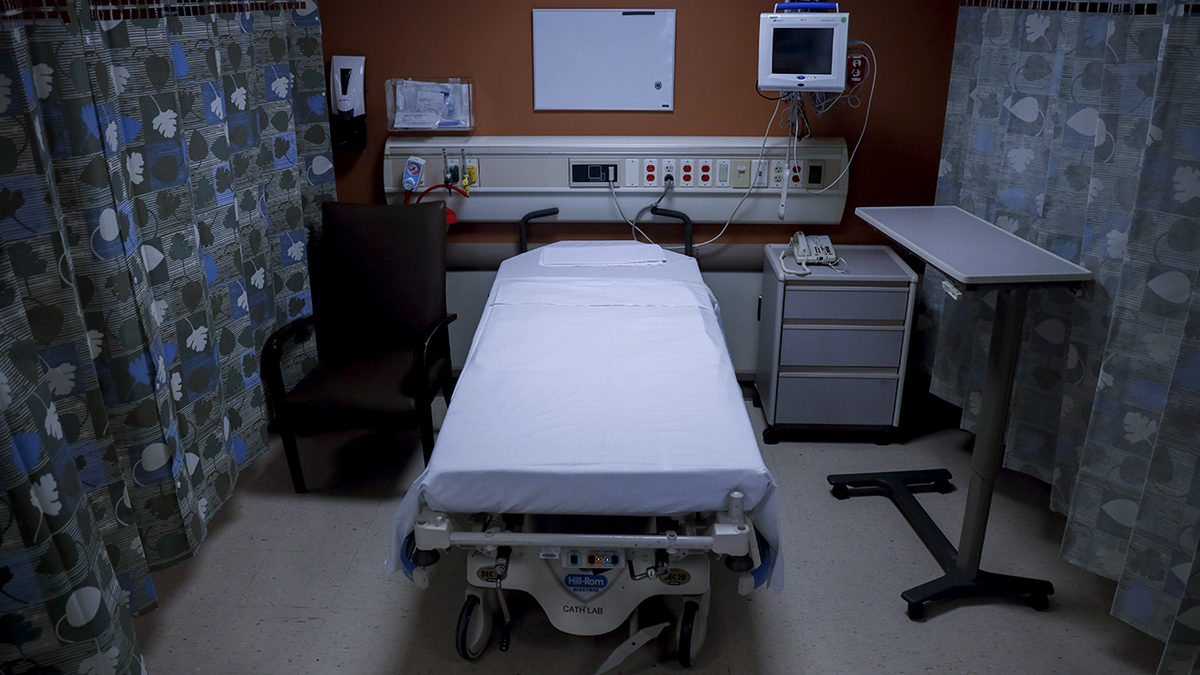[ad_1]
Hundreds of hospitals in rural areas of the U.S. are at risk of closure, according to new data from Chartis, a Chicago health care advisory services firm.
A total of 141 rural hospitals have closed since 2010 — while another 453 are “at risk of closure,” according to a press release.
The seven states with the most hospitals vulnerable to closures include Texas (45), Kansas (38), Nebraska (29), Oklahoma (22), North Carolina (19), Georgia (18) and Mississippi (18), as listed in Becker’s Hospital Review.
LESS THAN HALF OF NURSES ARE ‘FULLY ENGAGED’ AT WORK, WHILE MANY ARE ‘UNENGAGED,’ NEW REPORT REVEALS
In Florida, Tennessee and Nebraska, more than 41% of rural hospitals are at risk of closure.
Between 31% to 40% of rural hospitals are at risk in Utah, South Dakota, Kansas, Oklahoma, Alabama, North Carolina and South Carolina.

Hundreds of hospitals in rural areas of the U.S. are at risk of closure, according to new data from Chartis, a Chicago health care advisory services firm. (iStock)
In Wyoming, Texas, Louisiana, Arkansas, Mississippi and Georgia, between 26% and 30% of rural hospitals are in danger of closing, the report stated.
Factors impacting closure risk
The analysis identified seven factors that have the biggest impact on a hospital’s risk of closure.
Two of those were the number of years a hospital has been operating without a profit and the amount of net patient revenue.
BURNT OUT AND GETTING OUT: AMERICAN HOSPITALS STRUGGLE WITH INCREASING SHORTAGE OF NURSES
The study also looked at the hospital’s average number of inpatients during the year — and the average daily need for skilled nursing facilities.
The remaining three factors include the hospital’s reliance on inpatient revenue, its share of Medicare outpatient charges and each hospital’s case mix index.
Among the rural hospitals that are still operating, an increasing number are dropping essential health services, including cancer treatments and maternal care, the data showed.

An emergency department physician noted that rural hospitals are extremely important for the country’s health care system. (iStock)
Approximately 43% of rural hospitals are operating at a financial deficit, Chartis found.
“As the urgency of the pandemic disappears, the return of policy-driven reimbursement cuts, population health disparities and the nurse staffing crisis will apply renewed pressure to the rural health safety net,” said Michael Topchik, national leader of The Chartis Center for Rural Health, in the release.
How closures impact patients
Dr. Kenneth Perry, an emergency department physician in South Carolina, was not involved in the Chartis analysis but noted that rural hospitals are extremely important for the country’s health care system.
“There are many patients who do not have access to primary care, but are within close enough proximity to rural hospitals, and obtain most of their care within those hospital systems,” he told Fox News Digital.
HOME HOSPITAL CARE BRINGS ‘PHENOMENAL’ BENEFITS TO PATIENTS AND PROVIDERS, STUDY FINDS
“As economic pressures have increased for hospitals in the last few years, it has become increasingly difficult for these hospitals to stay financially profitable.”
Between the Centers for Medicare and Medicaid and private insurers, hospitals have faced “ever smaller” reimbursement amounts, Perry noted.
“Even with lowering reimbursement, operating costs have skyrocketed,” he added. “This makes it very difficult for rural hospitals to be profitable enough to stay open.”

“As the urgency of the pandemic disappears, the return of policy-driven reimbursement cuts, population health disparities and the nurse staffing crisis will apply renewed pressure to the rural health safety net,” the study author said. (iStock)
In areas where hospitals are forced to shutter, Perry warned that many patients will lose not just hospital care, but also access to emergency departments.
“Many patients, specifically low or under insured patients, use the emergency department as a source of primary care,” he said.
“As economic pressures have increased, it has become increasingly difficult for these hospitals to stay financially profitable.”
“With the closure of these hospitals, many patients will lose access to all of their medical care.”
Without a feasible solution, Perry said, many patients will be left without access to emergency services and primary care.
Impact of REH designation
Chartis’ new report aimed to determine the potential impact of the Rural Hospital Emergency (REH) designation. It was enacted by Congress in Dec. 2020 as a means of ensuring emergency medical services in rural hospitals that may lack the resources to offer them.
CLICK HERE TO SIGN UP FOR OUR HEALTH NEWSLETTER
When a hospital is designated as an REH, it is able to provide emergency department services, observation care and potentially some outpatient services as long as the patient’s stay doesn’t exceed an average of 24 hours, according to the Centers for Medicare & Medicaid Services website.

“With the closure of these hospitals, many patients will lose access to all of their medical care,” an emergency department physician warned. (Getty Images)
“For some hospitals, our data model suggests the REH designation will serve as a desperately needed relief valve to avoid closing and provide a significant reversal in fortune for the vulnerable communities they serve,” Topchik said in the release.
“But the decision to convert is highly nuanced, and as a result, we expect to see a relatively small number of hospitals embrace REH.”
CLICK HERE TO GET THE FOX NEWS APP
There are 389 rural hospitals that Chartis identified as “most likely” to consider converting to REH status, with 77 designated as “ideal candidates.”
Fox News Digital reached out to Chartis and the American Hospital Association requesting additional comment.
For more Health articles, visit www.foxnews.com/health.
 FARRATA NEWS Online News Portal
FARRATA NEWS Online News Portal






